The Casa Easton Antenna Test Range has been busy the past few days. About 2 weeks ago, I discovered KJ6ER, Greg Mihran’s, PERformer (Portable, Elevated, Resonant) antenna. Greg describes the antenna in spectacular detail in a frequently updated document. He has extensively modeled the antenna for 40M through 6M. I built mine for 20M through 10M, especially for use with my QMX transceiver.
Bottom line: This one’s a KEEPER! Advice: Greg has a DONATE button as part of his fine article. I suggest using it to recognize his good work.
My problem with elevated vertical antennas
Several hams, WB3GCK, Craig La Barge, and WK4DS, David Saylors, in particular, talk about using elevated antennas atop poles mounted on the back of their trucks. They use them with tuned raised radials and they have great results at QRP power levels.
I’ve tried elevated antennas and raised radials on my own antenna test range and haven’t yet matched their results. However, I’ve not had good measurements for the various components. Guesswork resulted in functioning antennas, but not in the kind of results Craig and David report.
Until…
The KJ6ER description brought it all home for me. KJ6ER, Greg, describes his modelling, includes several tables showing measurements, and offers construction ideas. All are great starting points.
I modified a stand I had previously used for elevated antenna testing, making it the height Greg suggested, 52 inches. A quick trial with a 17′ whip adjusted to a 15m length and 2 raised radials at Greg’s suggested lengths enabled the very first QSO, an easy 5w QSO, from Central Florida to KR7Q, Clifford, in the mountains of western Montana. BAM! I was hooked.
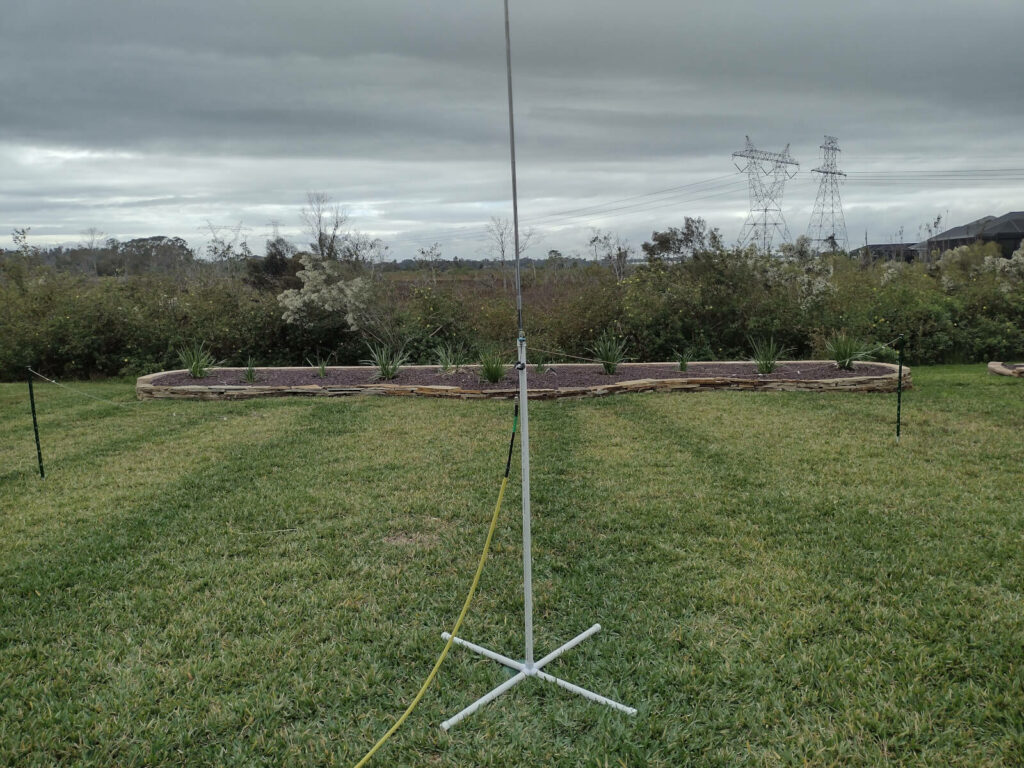
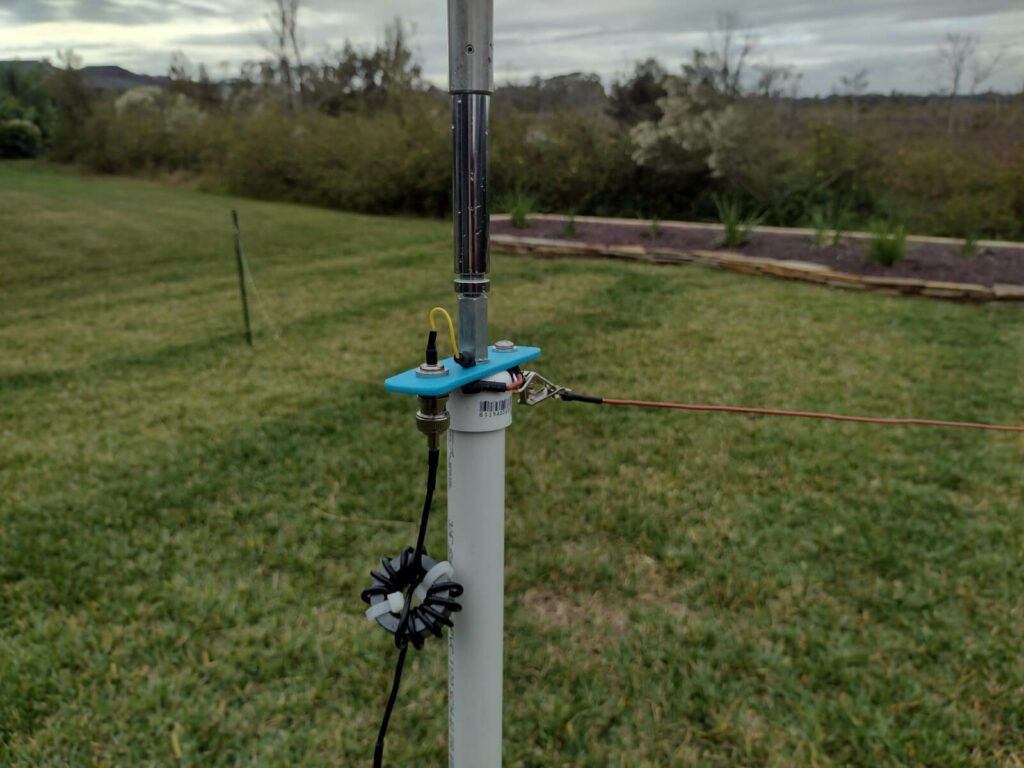
Next, improve the components. My old 17′ whip was rickety, showing dancing SWR indications as the wind blows and sometimes having a section or two spontaneously collapse. Replacing it with a new Chameleon SS17 fixed that problem. Then, I constructed a pair of linked radials for 10m, 12m, 15m, 17m, and 20m similar to those Greg describes. (I used his exact lengths.) Lastly, I rebuilt the simple little Common Mode Choke that you see dangling between the whip and the feedline. It keeps stray RF off the feedline and offers consistent SWR that doesn’t involve the feedline acting as a random radial.
My antenna test range is my backyard. I setup the antenna as you see it with a couple of plastic electric fence sticks as end points for the radials. A short segment, made of paracord, can be moved from segment to segment in the linked radials to select bands. Through testing, I found vertical element lengths that were optimum for each band in this configuration. I discovered that the best way to adjust it is to set the vertical element a bit longer than the lengths in the table, and then reach up and fiddle with the 2nd section of the whip, which is just within my reach. So far, I’ve used the radials 90 degrees to each other, which Greg’s models show a modest bit of directionality. For these tests, and that Montana QSO, they were pointed WNW.
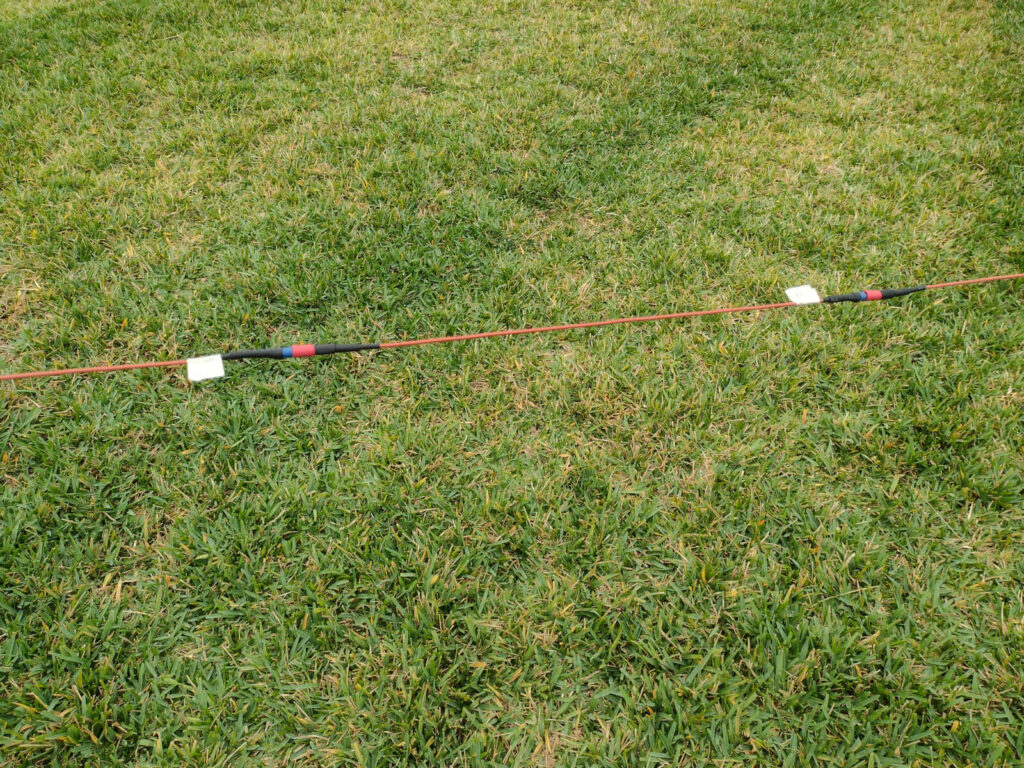
Results
I measured with a NanoVNA, and then with WSPR. Antenna lengths were tuned for lowest SWR in the CW portions of the bands, usually the QRP hailing frequency. I frequently use WSPR to discover an antenna’s potential, and treat WSPR results as a “possibility,” never a guarantee. Each of these WSPR runs were mid to late afternoon in the US Eastern timezone, with each run for 6 minutes. Solar Ham showed this as a typical propagation day, no solar storms.
These are the lowest SWR results I’ve seen in any of my testing.
| Band | Radial lth | Radiator lth | SWR | Impedance |
| 10m | 80″ | 114″ | 1.031:1 | 50.7Ω |
| 12m | 96″ | 124.5″ | 1.045:1 | 51.1Ω |
| 15m | 120″ | 143.5″ | 1.027:1 | 48.7Ω |
| 17m | 149″ | 163″ | 1.049:1 | 49.7Ω |
| 20m | 198″ | 207.25″ | 1.041:1 | 48.1Ω |
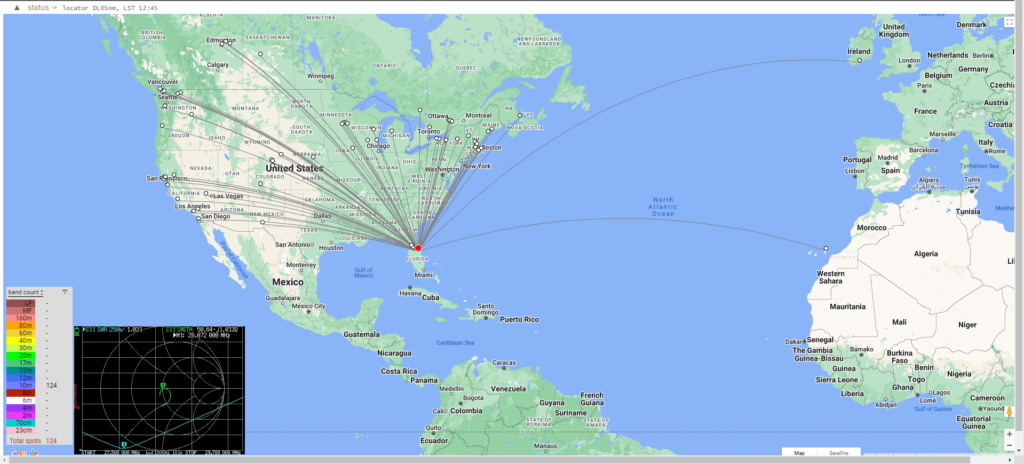
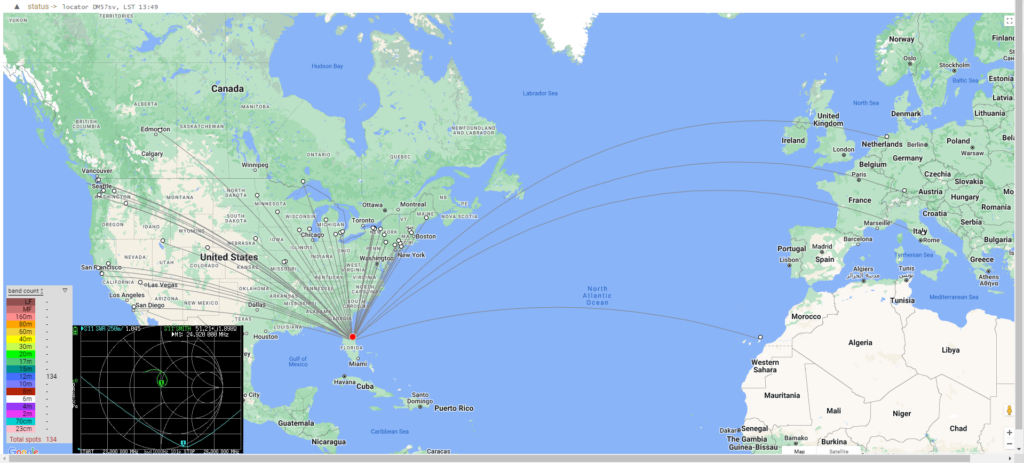
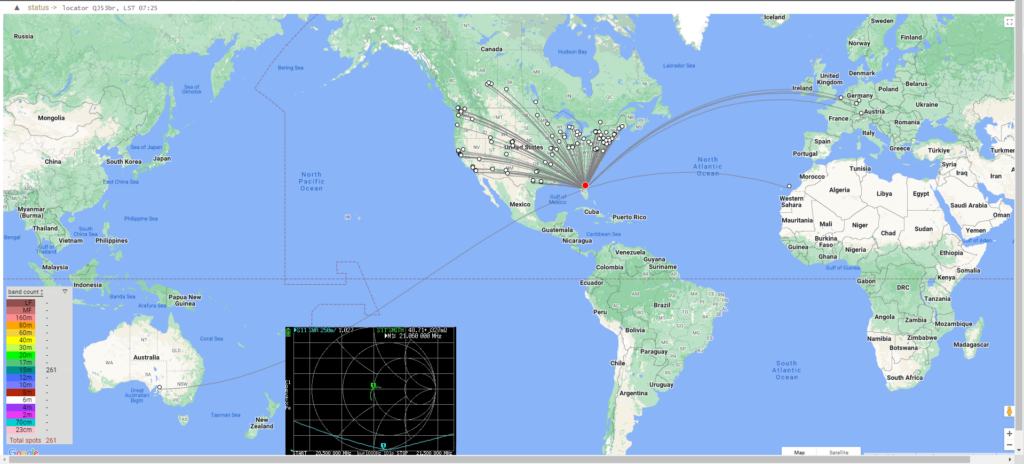
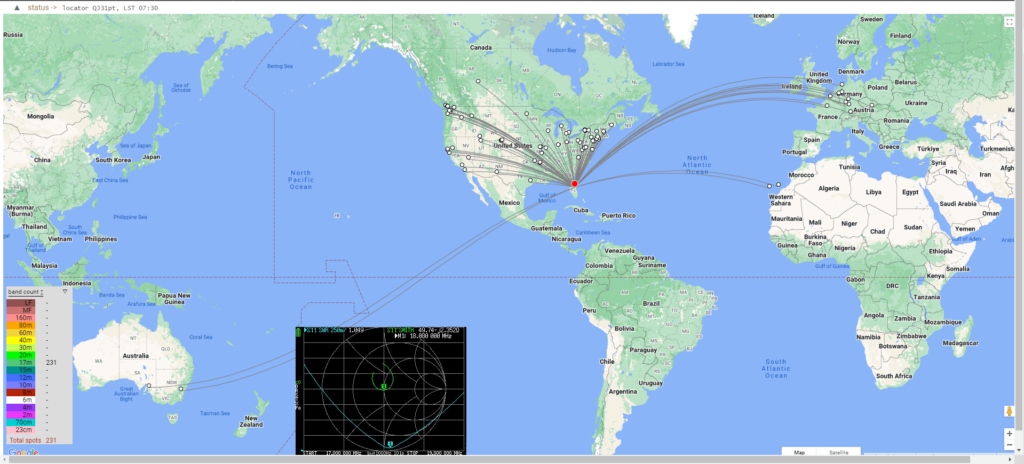
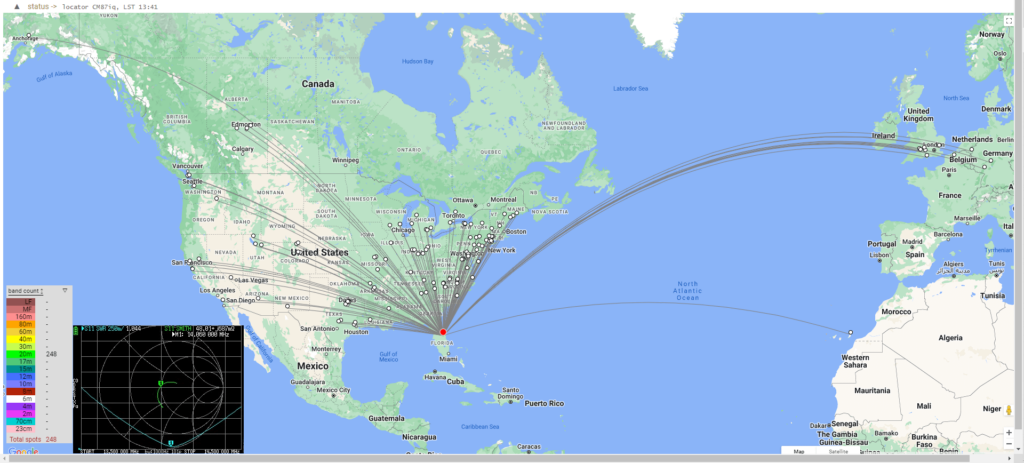
Compared to other Casa Easton Test Range antennas
Long ago, I crawled around burying 18 radials in the grass. I use that field with either a Wolf River Coils antenna or with Hamsticks, all sitting atop a low tripod. They’ve produced ~almost~ continental coverage, and always enough capability to reach hundreds upon hundreds of mid-continental POTA activators. SWR with those configurations run between 1.3:1 and 1:7:1, never lower.
My vertical dipole, A DX Engineering Transworld 2010 (TW2010) has also offered reliable mid-continental results, and maybe longer reach than the verticals atop the radial field. It’s advantage is quick setup, even tough it does need more than the usual amount of coax for impedance balance … and SWR in the 1.2:1 to 1.4:1 range. The difference is so slight (in actual listening) as to not be noticeable. Knowing what I know of it now, I shouldn’t have spent that much on it.
DIY-built EFHW and EFRW inverted Vees have almost always performed better than the verticals over the radial field. I’m continually playing with variations and am usually pleased with how well they work, especially the ease of changing bands.
Which brings me to the PERformer. KJ6ER, Greg, shows his models demonstrating efficiency factors about 30% better than most of my other antennas, and some directional front-to-back gain. So far, I’ve had delightfully solid results and at least one contact well beyond the normal range of my other antennas, possibly confirming the directional gain. A too-short session yesterday brought a quick string of POTA QSOs at higher than usual signal reports. I’m not quite gushing yet, but I have thanked Greg and remind you to push his DONATE button when you see the same results I have.
Time will tell. (Hey Alaska, are you hearin’ me?)
Bonus material
KB9VBR, Michael Martens excellently describes details of his build and his results below. Pay particular attention to the last / summary section.
Wow Bob, thank you very much for a superb write-up on my DIY PERformer quarterwave antenna with 2 elevated radials! While the antenna provides over 90% radiated efficiency, I’ll rate your article a full 100% my friend!
I am always humbled by nice reports from builders – this is why I design these portable antennas and share the PDF plans for free with the amateur radio community. I sincerely appreciate your kind words and am always happy to answer any questions that may come up. I’m also available to speak to amateur radio clubs on the topic of portable antennas if interested.
Now that you’ve tried my PERformer quarterwave, you may want to try my Dominator halfwave antenna and the new PVC add-on with a parasitic director transforming it into a 2-element vertical beam!
Keep in touch, and thanks again for the wonderful post 🙂 73 KJ6ER